E-Newsletter February 2020
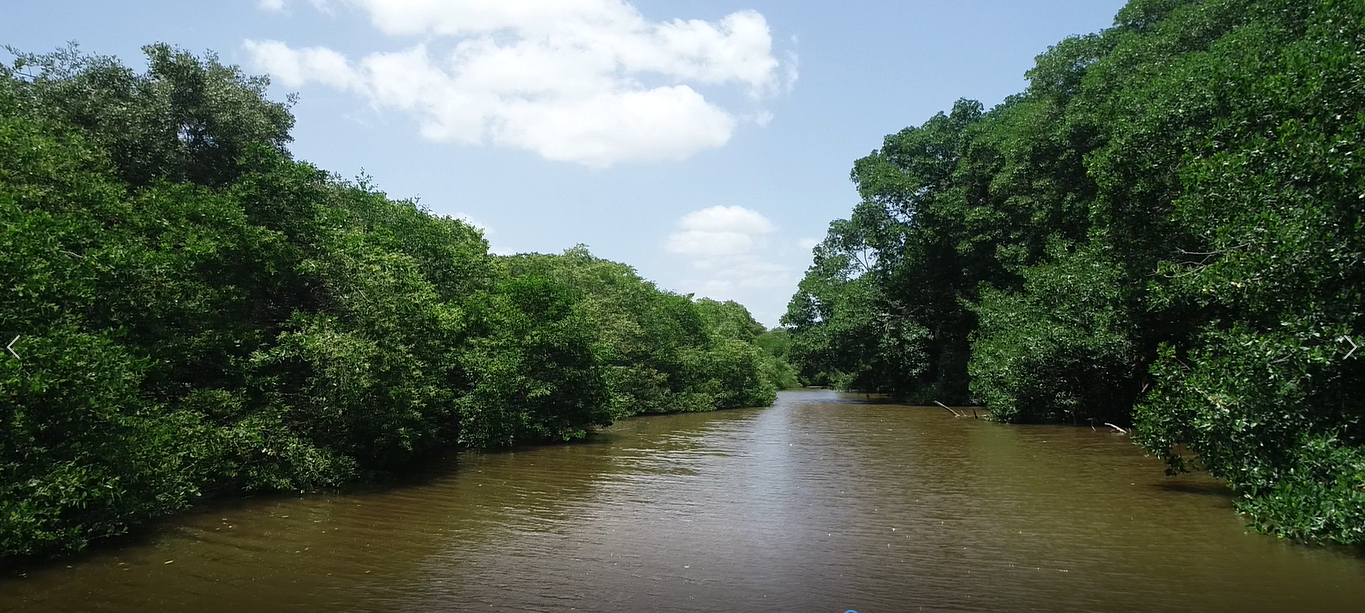
We have long recognized the importance of the Ranchería River and its contributions to maintaining the entire region’s ecosystem. As such, we have developed a more committed and comprehensive vision in regard to the efficient use of water management.
How we use water from the Ranchería river in our operation
At Cerrejón, we have long recognized the importance of the Ranchería river and its contributions to maintaining the entire region’s ecosystem. As such, we have developed a more committed and comprehensive vision in regard to the efficient use of water management. According to ongoing monitoring from the National Environmental Licensing Authority (ANLA), Cerrejón is one of the lowest consumers of water from the Ranchería River. This is because, based on the water concession granted by Corpoguajira (the regional environmental authority) for various uses, 92.5% of the water is used for agriculture and livestock and 5.7% for services or domestic use, while Cerrejón uses only 1.8% of the water from the river.
Since 2009, Cerrejón has changed its consumption ratio from 50/50 to more than 90% low-quality water and less than 10% high-quality water. This has come about thanks to the implementation of efficient water usage measures from its Environmental Management Plan (EMP). Currently, only 10% of the water used by Cerrejón is of high quality, that is, water coming from the Ranchería River and shallow wells (quaternary aquifer), which is used mostly for human consumption following prior conventional treatment (65%) and for other domestic and industrial activities (35%).
At Cerrejón, we monitor the Ranchería River before, during and after the mine through 12 flow monitoring stations from the Institute of Hydrology, Meteorology and Environmental Studies (IDEAM) located all along the body of water. It has been proven from this ongoing monitoring that the volume of the river’s flow increases as it goes by Cerrejón, contrary to the belief that the river flow decreases as it passes by the mine.
It is extremely important to point out that Cerrejón does not dump waste or heavy metals into the Ranchería River that could alter the quality of the water. To guarantee control of any impacts the mining operation or its activities may cause on water quality, we annually take more than 4,000 samples to make physical, chemical and bacteriological analyses. These are done at the Cerrejón Environmental Laboratory, accredited under ISO-NTC (Colombian Technical Normative) 17025:2005.
In this continual monitoring, nothing has been found to indicate that our operation puts the quality of water from the Ranchería River at risk, nor the survival of its aquatic flora and fauna, nor effects that compromise the health of the communities downstream from the mining operations.
As we mentioned earlier, over the past seven years the company has reduced collection and use of high-quality water by 69% compared to its consumption in previous years. These results, although notable, do not hinder our efforts to keep improving and incorporating new technologies that allow progressive replacement of using high-quality water for lower-quality water.
We guarantee access to water for resettled communities
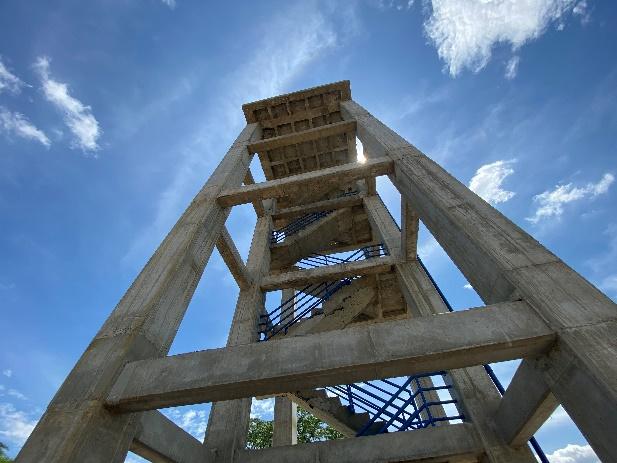
Cerrejón remains committed to improving access to water, and that this is of high quality, in the five communities who have been resettled by the company. To do this, Cerrejón has put in place two water treatment plants into operation that are responsible for ensuring the water supply for 170 families belonging to the resettled communities of Roche, Patilla, Chancleta, Las Casitas and Tamaquito II. This work forms part of the commitment to guarantee that people have better living conditions than what they had originally, and although installation of the treatment plants has required constant adjustments and revisions, it has been possible to ensure the quantity and quality of water needed by each community.
Currently, the two plants produce 173,000 litres of water per day and are operated by community associations from Asoawinka and Tamawuin. Members from the two associations received training from Cerrejón, who worked with them to make the plants stronger and more efficient. Since 2018, the Tamaquito II community has received 30,000 litres of drinking water per day through the Wastewater Treatment Plant operated by Tamawuin and financed by Cerrejón. It is important to note that this plant, following water quality testing carried out by an independent laboratory, Nancy Flórez, which is accredited by Colombia’s Institute of Hydrology, Meteorology and Environmental Studies (IDEAM), resulted in a 0 on the Water Quality Risk Index. That is to say, the best possible result, which guarantees the highest-quality water.
As to the communities of Chancleta, Roche, Patilla and Las Casitas, they receive approximately 143,000 litres per day via the Asoawinka treatment plant. In the specific case of Chancleta, however, for internal reasons having to do with the community, who have not allowed the pipes that carry water from the plant to the houses to be cleaned, it has been necessary for Cerrejón to provide around 14,800 litres of water per day by means of tanker trucks.
In 2018, to ensure that the water received by the households is of the highest quality, Cerrejón also carried out a water quality study through the Nancy Flórez independent laboratory. Tests have shown that the water processed in the two treatment plants is suitable for human consumption. In addition, the communities of Roche, Patilla, Las Casitas and Chancleta expressed their wish to receive data from another laboratory in order to validate the results. The first three communities have already chosen a laboratory and sampling will begin soon. However, the community of Chancleta has not yet formalised their choice of an accredited laboratory.
At the end of 2018 and early 2019, Cerrejón also connected the communities of Roche, Patilla, Chancleta and Las Casitas to the sewage system in the municipality of Barrancas in order to advance with structural improvements. On October 23, 2019, the La Guajira Health Department visited the Water Treatment Plant in these communities and, after taking water samples from various points, had positive comments on the good sanitary practices being followed.
At Cerrejón, we are committed to bringing drinking water to the resettled communities, and we expect a prompt response from Chancleta to start the supply of drinking water from the plant as well as in regard to their choice of an accredited laboratory where we can send samples.
We implement technological improvements to monitor air quality
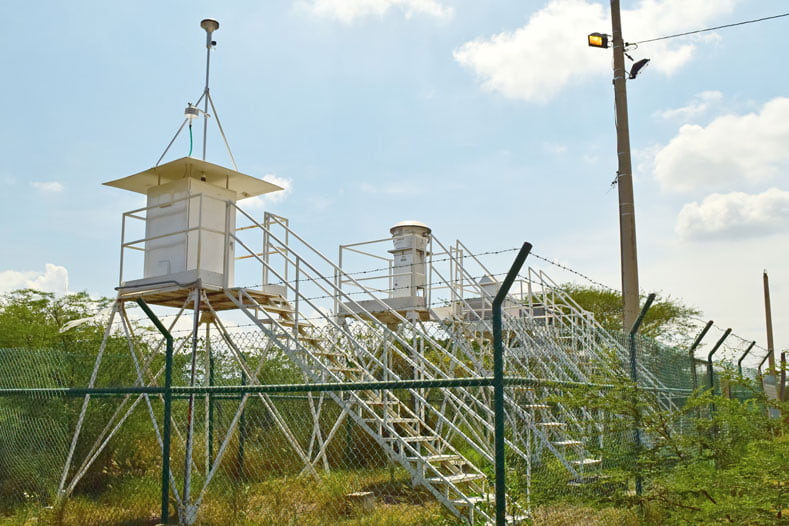
At Cerrejón, we care about the well-being of neighbouring communities and that of our workers. This is why we take all necessary measures to lessen the impacts caused by the emission of dust. With the goal of constantly improving, we continue to employ the best tools available. As of 2017, we have been using our own TARP (Trigger Actions Response Plan) air monitoring procedure, which complements the real-time monitoring system in place, one of the best air measurement technology available on the market.
These two mechanisms not only allow us to know the behavior of air quality, but also to adopt timely preventive and corrective measures, including the suspension of activity should it be necessary. Results collected by the air quality monitoring stations are available to all interested people.
The TARP was designed by our environmental professionals to describe and anticipate potential scenarios in which the concentration levels of particulate matter (residual particles in the air) may rise during certain jobs in the operation. The TARP is a forecasting tool that establishes levels or ranges based on information collected, and which defines when it is or would be necessary to activate additional controls to ensure the air quality protection and the operation’s normal functioning.
In our case, the forecasting model shows the true likelihood of risk according to the prevailing wind direction that is carrying the particulate material. From there, a plan for preventive or reactive actions is established, supported by real-time information on variables to ensure that operations never take place when there are high levels of particulate material within the mine.
Additionally, the real-time monitoring system (Envirosuite) provides information on concentration levels and wind direction for comparison with the TARP levels. So, this is how these two mechanisms working simultaneously guarantee that our risk management system forecasts and reacts promptly to potential impacts resulting from an increase in particulate material. To develop this monitoring, we have 16 stations: 11 in the mine, 2 in the rail line and 3 in Puerto Bolivar.
We are aware that dust creation is one of the concerns of neighbouring communities, which is why we involve representatives from the communities downwind from the mining operation in this work: Provincial, Campoalegre, Papayal, San Francisco, Barrancas and the Media Luna community located in Puerto Bolívar.
Likewise, as of 2008 we form part of an Environmental Oversight Committee for the mining operation made up of 17 representatives chosen from among the community, Corpoguajira and the University of La Guajira. We are confident that this team work means better procedures and well-being for the community.
At Cerrejón we remain attentive to any improvements we can make to ensure air quality within the operation and in its neighboring communities.
Public Works for Tax Initiative: more water for the Capital of La Guajira
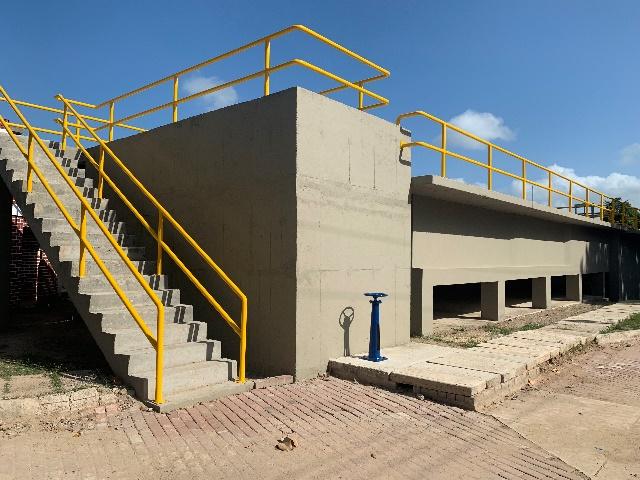
Looking to help improve the quality of life in the communities in La Guajira, Cerrejón joined the Public Works Tax Initiative promoted by the National Government. Over 12 months, the first infrastructure construction project was developed to improve quality and access to water for the citizens of Riohacha, capital of La Guajira.
The Public Works Tax Initiative is a process created by the National Government as a way to involve the private sector in actions geared towards development and increased competitiveness in different regions of the country, mainly in areas most affected by internal conflict. In La Guajira, drinking water supply, sewage, energy and repair of roads and infrastructure were identified as priority issues.
Taking into account the concerns and needs of the capital of La Guajira regarding access to water, at Cerrejón we took on the challenge and responsibility to develop the Water Treatment Plant expansion project in Riohacha. The goal of this project was to improve citizens’ quality of life, increase the number of people who benefit from the plant and to boost productivity and its effects.
This work, which started at the beginning of 2019, had an investment of approximately USD $2 million and was finished and delivered to the municipality in November of the same year. Likewise, this expansion allowed to raise water production to 100 litres per second, increase continuity in the water supply and, additionally, provide profits of around USD$200,000 to local businesses.
This project has made it possible to expand and strengthen our relationship with the communities in the La Guajira, allowing us to identify and address the structural needs for water services in this region. Through this project, Cerrejón has been able to directly contribute to the building of peaceful scenarios and to move forward in the department.
Our commitment to respect human rights
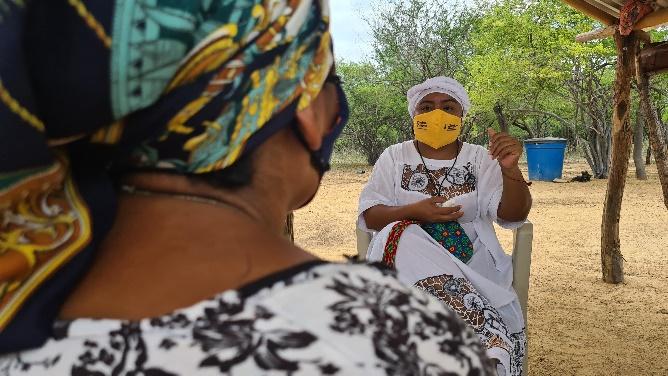
At Cerrejón, we are committed to responsible social management and the well-being of all our workers and neighbouring communities. This is why we have spent the last 15 years enhancing our operation and implementing international due diligence standards that support our Human Rights (HR) management policies. In 2005 we issued our first Human Rights Policy, in line with Colombian law and the Universal Declaration of Human Rights. Nevertheless, as these issues have advanced internationally, in 2011 we reframed our policy to align it with the UN Guiding Principles on Business and Human Rights (UNGPs).
Likewise, since 2008 we have been implementing standards such as the Voluntary Principles on Security and Human Rights (VPs), the performance standards from the International Finance Corporation (IFC) and later, in 2011, we incorporated the series of good practice guides developed by the International Council on Mining and Metals (ICMM) aimed at contributing to sustainable development in the industry. According to the UNGPs, companies should establish procedures to identify, prevent and mitigate all their impacts (potential and actual) and provide compensation when necessary.
To be able to respond quickly and repair any impact caused immediately, we have a prevention and mitigation proposal at Cerrejón, designed through a due diligence process, which includes:
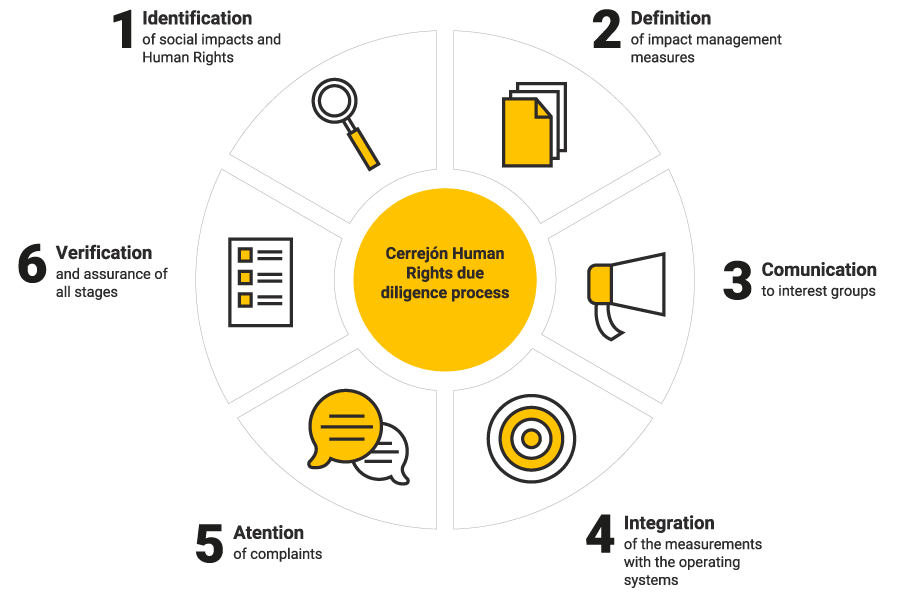
1. Having a high-level of commitment and corporate policy.
At Cerrejón, we have a human rights policy that is public and transparent and respects human rights as essential criteria for business management in all our activities. Likewise, we are committed to efficiently reporting on the processes and measures being done as we carry out our operation.
2. Having a process to identify, prevent and mitigate risks and impacts on human rights.
In applying international standards, mainly the UNGPs, Cerrejón must recognize the proven, potential and perceived impacts of its operation on stakeholders, including those affecting human rights, in the spirit of establishing appropriate measures for prevention, mitigation and, should it be necessary, compensation. This is why Cerrejón has done two human rights risk and impact studies, in 2011 and 2016 through an impartial third party, to identify and improve our management of risks and impacts.
3. Having mechanisms to correct all the negative consequences on human rights that the company has caused or contributed to creating.
According to the UNGPs, companies are expected to establish or participate in effective mechanisms to deal with complaints about possible negative impacts. Additionally, these should be done early to avoid situations becoming more serious, and agreements should be reached through dialog in regard to remedial measures. As such, Cerrejón has had a Complaints Office (CO) since 2010 that is essentially responsible for carrying out the following tasks:
- Reception of the complaint and its recording in the system.
- An investigation process that has participation from the person who filed the complaint and from the area that possibly caused the impact to determine, through technical and proven information, whether or not there has been an impact.
- Attempt to reach an agreement, with or without compensation, on a case-by-case basis.
- Closure.
It is important to note that the CO has received around 2,600 complaints of which 81% have been closed, 16% are currently being processed, 2% have been scheduled and 1% have been transferred to other authorities.
Finally, we feel it is important to repeat that Cerrejón is committed to compliance with international norms and the National Constitution. This means we consider that respect for human rights, in the broader sense, includes respect for the rights of our workers and contractors, identification and management of impacts that the mining operation may have on people and communities, and respect for diversity on grounds of ethnicity, beliefs or gender.
Any violation of the Human Rights Policy or possible impacts from the operation may be reported to Cerrejón’s Complaints Offices, located at the mine’s main entrance and in Puerto Bolívar. The telephone extensions are 5886 / 6475 and the e-mail is hablemos@cerrejon.com

At Cerrejón, we have long recognized the importance of the Ranchería River and its contributions to maintaining the entire region’s ecosystem. As such, we have developed a more committed and comprehensive vision in regard to the efficient use of water management.
E-Newsletter febrary 2020
